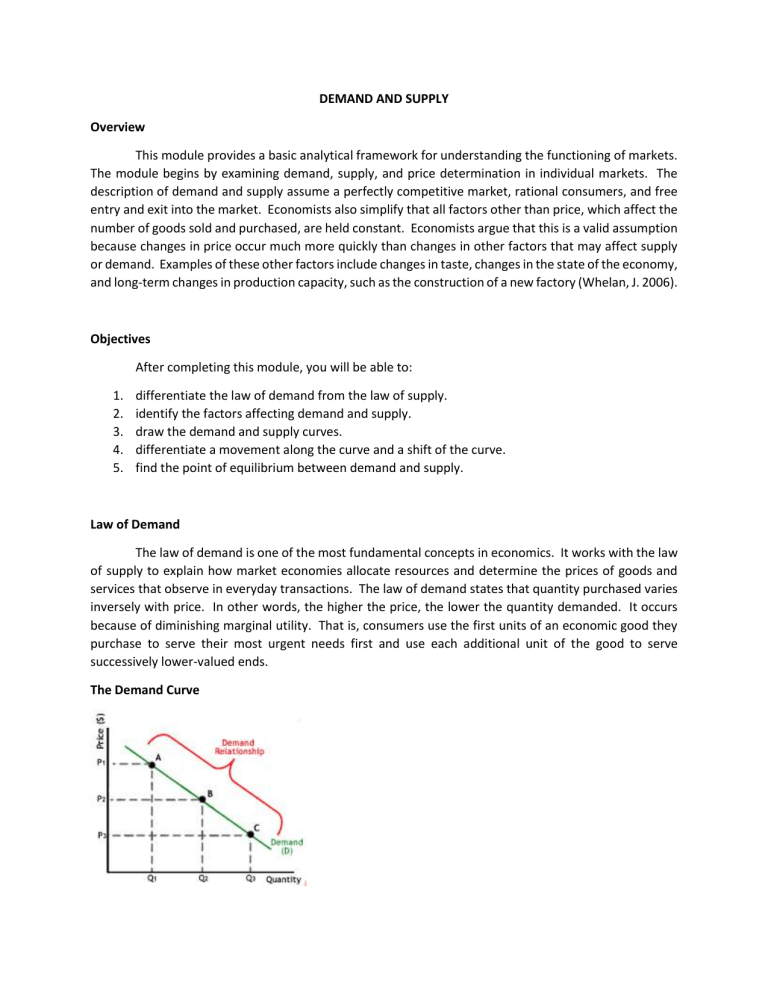
DEMAND AND SUPPLY Overview This module provides a basic analytical framework for understanding the functioning of markets. The module begins by examining demand, supply, and price determination in individual markets. The description of demand and supply assume a perfectly competitive market, rational consumers, and free entry and exit into the market. Economists also simplify that all factors other than price, which affect the number of goods sold and purchased, are held constant. Economists argue that this is a valid assumption because changes in price occur much more quickly than changes in other factors that may affect supply or demand. Examples of these other factors include changes in taste, changes in the state of the economy, and long-term changes in production capacity, such as the construction of a new factory (Whelan, J. 2006). Objectives After completing this module, you will be able to: 1. 2. 3. 4. 5. differentiate the law of demand from the law of supply. identify the factors affecting demand and supply. draw the demand and supply curves. differentiate a movement along the curve and a shift of the curve. find the point of equilibrium between demand and supply. Law of Demand The law of demand is one of the most fundamental concepts in economics. It works with the law of supply to explain how market economies allocate resources and determine the prices of goods and services that observe in everyday transactions. The law of demand states that quantity purchased varies inversely with price. In other words, the higher the price, the lower the quantity demanded. It occurs because of diminishing marginal utility. That is, consumers use the first units of an economic good they purchase to serve their most urgent needs first and use each additional unit of the good to serve successively lower-valued ends. The Demand Curve Law of Supply The law of supply is the microeconomic law that states that all other factors being equal, as the price of a good or service increases, the quantity of goods or services that suppliers offer will increase, and vice versa. The law of supply says that as the price of an item goes up, suppliers will attempt to maximize their profits by increasing the quantity offered for sale. The Supply Curve Movement Along the Curve vs. Shift of the Curve A shift in the demand curve occurs when the whole demand curve moves to the right or left. For example, an increase in income would mean people can afford to buy more widgets even at the same price. The demand curve could shift to the right for the following reasons: The good became more accessible (e.g., fashion changes or successful advertising campaign) The price of a substitute good increased. The price of a complement good decreased. A rise in incomes (assuming the good is a normal good, with positive YED) Seasonal factors. A change in supply leads to a shift in the supply curve. It causes disequilibrium in the market that is corrected by changing prices and demand. An increase in the change in supply shifts the supply curve to the right, while a decrease in the change in supply shifts the supply curve left. Market Equilibrium The equilibrium price is the market price where the quantity of goods supplied is equal to the quantity of goods demanded. It is the point at which the demand and supply curves in the market intersect. To determine the equilibrium price, you have to figure out at what price the demand and supply curves intersect. The easiest is to see it visually on the following graph.





